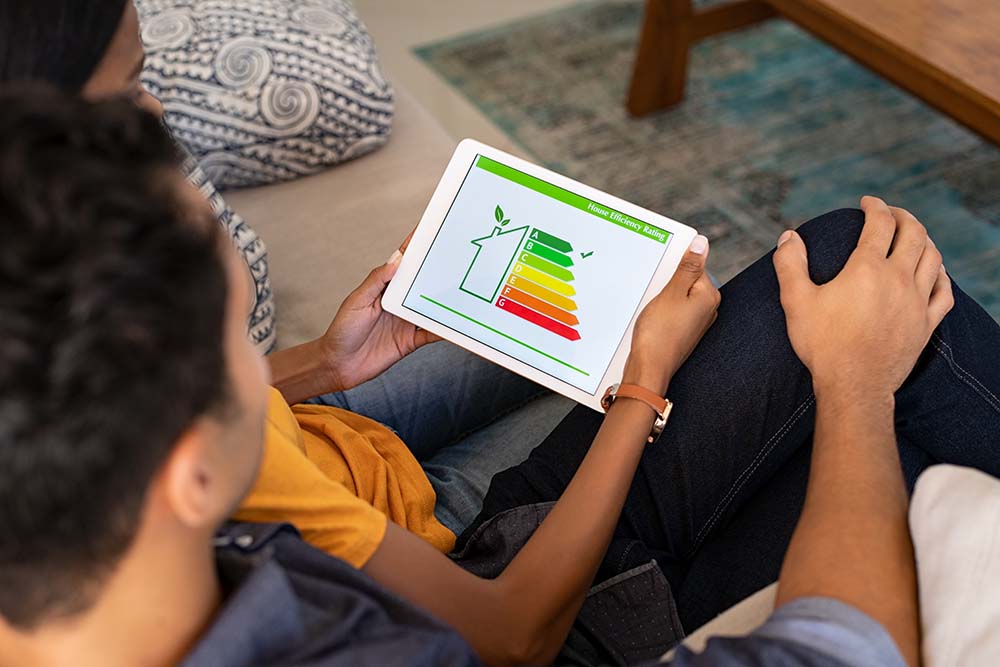If you are a landlord, you will be aware that recent years have seen successive changes to the energy-efficiency standards the law requires you to maintain for your let property. It might have been something of a challenge to keep up with the steadily more stringent requirements.
In 2020, the government opened a consultation process about raising Minimum Energy Efficiency Standards (MEES) for residential let properties. Following that consultation, it is now proposed that from 2028 all residential let properties must achieve an Energy Performance Certificate (EPC) of at least a C rating. The original intention had been for a staged approach in which, from 2025, all new tenancies would need to meet that standard and that by 2028 it would apply to all residential properties.
For further reading about EPCs and how to get one, you might want to review our webpage.
Against this background of steadily more stringent rules, you will also want to know what you can do to improve your let property’s EPC rating.
Insulation
Probably the single most efficient way of conserving the energy required to heat your home is to prevent its loss by thoroughly insulating the building.
The Energy Saving Trust points out that around a third of all heat that is lost from an uninsulated home escapes through the walls. Insulating the cavity between the two courses of brick or blockwork, therefore, is one of the most efficient energy-saving measures – and could save you around £540 a year in energy bills.
Floor insulation – under the floor and around the skirting boards – could save you a further £180 for a detached house (£110 for a semi-detached) while topping up the insulation in your loft could save £55 a year more.
For the relatively affordable cost of an insulating jacket for your hot water cylinder, you could improve the EPC rating of your home – and save yourself as much as £70 a year in energy bills.
These references to savings on your energy bills are calculated by the Energy Saving Trust in July 2022, before the recent major increases in energy prices, and your savings, therefore, could now potentially be even greater.
Double-glazing
Simple steps you can take for an immediate impact include the suggestion we made elsewhere about draught-proofing your windows and doors. Keeping the cold air out and the warmth can help boost your EPC rating at a stroke.
A longer-term and even more energy-efficient investment will be double-glazing – or triple-glazing – your windows. Some 18% of the heat within your home is lost through the windows, suggests research done by the government, and you can combat that loss by the installation of double glazing that is rated A+.
Lighting
If you are still using traditional incandescent light bulbs or halogen lighting give serious consideration to replacing these with far more energy-efficient LED systems.
According to a posting by Smart Lighting Industries on the 24th of September 2022, LEDs (which stands for Light Emitting Diodes) consume 75% less energy and can last up to 25 times as long as traditional lighting. Replacing incandescent bulbs with new LED lights could save £13 a year for each old 100W bulb and £6 for every 60W bulb.
Energy audit
If you are the landlord of a whole block of flats or multiple let units and want a global picture of your use of energy and how to make it more efficient, you may want to consider a root-and-branch energy audit – just as we suggested in an earlier blog about savings on your energy costs.
Update your EPC
Once you have taken as many of the energy-efficiency measures as you can, you might want to arrange for a new EPC for your let property.
As we explained in an earlier blog, the inspection and certification must be done by an accredited domestic energy assessor and an appropriate contact can be found through the government website. The latter will also display any existing EPCs for the property in question.
The process is somewhat different if the property is in Scotland.








